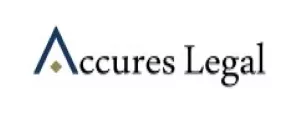Introduction:
When a patent is filed or granted for an invention, it is important to understand that it does not signify the finality or completion of the invention. In today's rapidly evolving technological landscape, opportunities for enhancements and modifications to the original invention abound. In fact, these advancements can often result in the emergence of entirely novel inventions altogether. This is where the concept of patents of addition comes into play, allowing for further protection and recognition of these subsequent improvements and their contributions to the field of innovation. By acknowledging the potential for ongoing developments and embracing the flexibility of patent systems, we encourage a dynamic environment that fosters continuous progress and the exploration of new frontiers.
Provisions and Guidelines for Granting Patents of Addition under the Indian Patents Act of 1970
Within the framework of the Indian Patents Act of 1970, the provisions outlined in Sections 54, 55, and 56 specifically address the concept of patents of addition. These sections delineate the circumstances under which a patent of addition may be granted. Essentially, if an application for an invention involves modifications or improvements to an existing invention for which an application has already been filed or a patent has already been granted, the Controller has the authority to bestow a patent of addition. However, the crux of the matter lies in determining which specific modifications or improvements should be taken into consideration when evaluating eligibility for a patent of addition. This critical question prompts a deeper exploration into the underlying criteria and considerations that shape the decision-making process surrounding the granting of patents of addition. By delving into the intricacies of this issue, we can gain a clearer understanding of the requirements and guidelines that govern the allocation of these supplemental patents within the Indian patent system.
Mere existence of certain shared elements between two inventions is insufficient evidence to establish that the proposed addition qualifies as an improvement or modification of the parent application or patent. A comprehensive assessment is necessary to ascertain whether the proposed patent of addition truly represents an advancement or alteration over the original invention. To aid in this determination, the Draft Manual of Patent Practice and Procedure emphasizes the need for a careful examination by the patent office. This examination involves a thorough comparison of the unique contributions that the new specification brings to the field of technology. It extends beyond a simple comparison of the characteristics claimed in both applications. This discerning evaluation takes into account the novelty and inventive steps introduced by the proposed patent of addition. In a more technical context, the term "improvement" carries the implication of modifying the technological components utilized within the primary invention. It goes beyond offering a mere alternative method of achieving the same outcome. By adopting this nuanced perspective, we establish a robust framework that ensures the differentiation between superficial changes and genuine advancements, thereby safeguarding the integrity and effectiveness of the patent system.
Factors and Criteria for Assessing Modifications and Improvements in Patent Applications
In addition to the previously mentioned factors, there are several other key indicators that aid in determining whether a proposed application represents a modification or improvement over the parent application or patent. Among these factors, a crucial consideration is assessing the feasibility of implementing the proposed addition without infringing upon the boundaries of the main patent. This evaluation necessitates a meticulous comparison of the complete disclosure contained within both applications, as seen through the eyes of a skilled individual well-versed in the relevant technology. By conducting this comparative analysis, we can discern the extent to which the proposed addition introduces novel elements or enhances the existing invention, thereby justifying the grant of a patent of addition.
Furthermore, an important aspect to consider is whether the modification or improvement in question would have been obvious at the time the parent application was filed. If the proposed alteration or enhancement was readily apparent or predictable to a person skilled in the field of technology, it would undermine the possibility of seeking a patent of addition. This criterion underscores the importance of originality and non-obviousness in the assessment of the proposed invention's eligibility for supplementary protection.
By incorporating these additional perspectives and criteria into the evaluation process, we can establish a comprehensive framework that encompasses various aspects such as non-overlapping implementation and the absence of obviousness, thus ensuring that the grant of a patent of addition truly reflects genuine advancements and innovative contributions to the realm of intellectual property. In the pursuit of obtaining a patent, three fundamental requirements must be fulfilled: novelty, utility, and inventive step. However, it is important to note that when it comes to a patent of addition, the inventive step for the disclosed subject matter in the patent of addition cannot be challenged in relation to the parent application or patent (as observed in the case of Ravi Kamal Bali v. Kala Tech and Ors. in 2008). This legal standpoint provides a unique safeguard for patents of addition, as their inventive step is not open to scrutiny based on the disclosure made in the parent application or patent.
Conclusion
In situations where all three requirements of novelty, utility, and inventive step are met, an alternative approach is available to the patentee: the submission of an independent patent application. This decision hinges upon the discretion of the patentee, who must consider various factors in determining whether to proceed with a patent of addition or opt for a completely new patent application. The choice between pursuing a patent of addition or filing a fresh patent application presents a significant decision-making point for the patentee. Factors such as the nature of the modification or improvement, the scope of protection desired, and strategic considerations surrounding the existing intellectual property portfolio all come into play. By carefully assessing these factors, the patentee can make an informed choice that aligns with their objectives and maximizes the potential benefits of their innovation.
The content of this article is intended to provide a general guide to the subject matter. Specialist advice should be sought about your specific circumstances.


